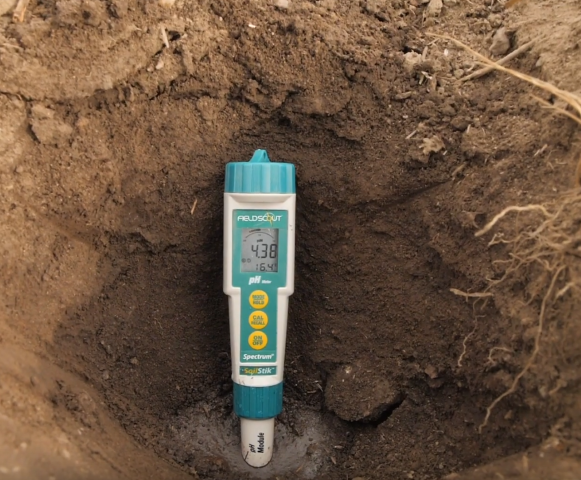Soil Sampling
Look through Clain's presentations for information on soil sampling or search the website.
- Soil Sampling and Laboratory Selection (Nutrient Management Module No.1)
- Soil Sampling Strategies (MT200803AG)
- The Soil Scoop Soil Testing: Getting a Good Sample (pdf)
- The Soil Scoop Soil Testing: Once You Have the Sample (pdf)
- Soil Texture
- "Mason jar" test (pdf) (video by Growit Buildit)
- Ribbon test - this takes practice, adding the correct amount of water is important.
- Are home soil test kits accurate?
- Comparing soil test kits with standard lab-based soil tests Crops and Soils Magazine, March 2019
- What happens to the soil sample at the lab? (video)
- What happens to a soil sample at a laboratory? posted with permission from High Plains Journal, in process of tracking down correct link.
Soil testing for pH
MSU P guidelines are based on Olsen P soil tests.
Request Olsen P, rather than Bray or Mehlich-3 (M3-P) from the lab.
If conversion is necessary:
- Olsen P ≈ (M3-P * 0.45) + 1.8 at a broad range of pH
- At pH < 7, Olsen P ≈ (Weak Bray P * 0.42) + 3.5. There is not a valid conversion at pH > 7.
-
P conversions come from Mallarino 1995 https://www.agronext.iastate.edu/soilfertility/info/ComparisonofMehlich-3OlsenandBray-P1Procedures.pdf
Soil testing to determine whether aluminum toxicity or other issues related to soil acidification are the cause of poor crop growth should be done in the top 2-4". Only go to 5-6" if there has been deep banding of N fertilizer or major use of anhydrous N.
Either submit the top 3" to a lab for analysis or sample with a field probe as follows.

Soil pH probe in soil slurry. Image by Clain Jones
- Scrape off the duff, which generally has higher pH, so exclude it.
- Dig a hole that is 2" deep with shovel or trowel, trying to make the bottom of the hole somewhat flat - parallel to surface
- Loosen the soil at the bottom of the hole
- Squirt in distilled water until water in hole is deep enough to fully immerse probe sensor (generally at or near bottom of probe)
- Place probe in slurry and give slurry a little stir with probe
- Wait until probe reading is stabile
- Repeat at 4"
Our best readings are in a beaker 1:1 or 2:1 soil:water slurries b/c can mix better. If you test soils using a container, try to collect a 0-3" (if can easily remove duff) or 1-3" sample (if can't), since that's the root zone and most affected by low pH. There are no huge advantages of taking pH at deeper depths because either acidity is a problem in the rooting zone, or not. While things like duff layer and uneven surface are certainly issues and perhaps you're actually measuring pH at 1.5 " or 3" when want 2", we have never found pH to be low anywhere in that 1 to 3" depth, and not be low at 2", meaning it's low throughout that top 3" when it's low.
- If pH < 5, you have verified that growth issues are due to pH
- If pH is 5 to 5.5, it's possible that growth issues are due to pH, but might still have time to prevent further acidification
- If pH is 5.5 to 6.0, acidity is coming and focus should be prevention
- If pH > 6, likely don't have a problem
It is good to sample in problem areas as well as areas that appear healthy, for comparison.
Soil samples to determine liming rates should be from thoroughly mixed 0 - 6” cores, or from averages of pH in the 0 - 3” and 3 - 6” depths.
